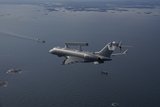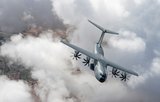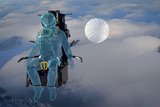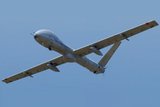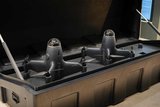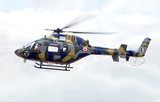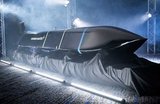US Air Force F-16s fitted with IVEWS set to take to the skies in 2024
IVEWS has been designed to provide the F-16 with a next-generation EW system. (Photo: Northrop Grumman)
The US Air Force (USAF) has progressed with its efforts to modernise the EW capabilities of its F-16 fighter fleet and will start conducting flight trials with the AN/ALQ-257 Integrated Viper Electronic Warfare Suite (IVEWS) in the coming months.
Speaking to Shephard, James Conroy, VP of navigation, targeting and survivability at Northrop Grumman, stressed that the system has already accomplished integration lab activity with the US government which was a ‘critical’ milestone.
“The US government has a couple of [F-16] jets that they are currently in process of modification and we look forward to starting flight tests by the
Already have an account? Log in
Want to keep reading this article?
More from Air Warfare
-
![Singapore’s Hermes 900 buy to enhance multi-domain ISR capabilities]()
Singapore’s Hermes 900 buy to enhance multi-domain ISR capabilities
Drawing on its endurance and substantial payload capacity, the Hermes 900 would provide a boost to Singapore’s ISR capabilities, particularly in the maritime domain.
-
![Dubai Airshow 2025: GA-ASI’s MQ-9B racks up new milestones with AEW demo planned]()
Dubai Airshow 2025: GA-ASI’s MQ-9B racks up new milestones with AEW demo planned
The company announced its demonstration timeline while confirming the MQ-9B had completed the platform’s third lifetime test.
-
![Dubai Airshow 2025: Edge Group eyes international market expansion, unveils new UAVs]()
Dubai Airshow 2025: Edge Group eyes international market expansion, unveils new UAVs
The UAV portfolio expansion comes in the wake of the Edge-Anduril joint venture announced ahead of the airshow.
-
![India reopens hunt for reconnaissance and surveillance helicopters]()
India reopens hunt for reconnaissance and surveillance helicopters
The extended deadline for vendors highlights the complexity of the procurement for India, with numerous vendors positioning themselves for the programme.
-
![Dubai Airshow 2025: Lockheed’s AGM-158 XR flight tests planned for 2026]()
Dubai Airshow 2025: Lockheed’s AGM-158 XR flight tests planned for 2026
The AGM-158 XR, which started as a Lockheed Martin internal investment, was first unveiled in September 2024.








